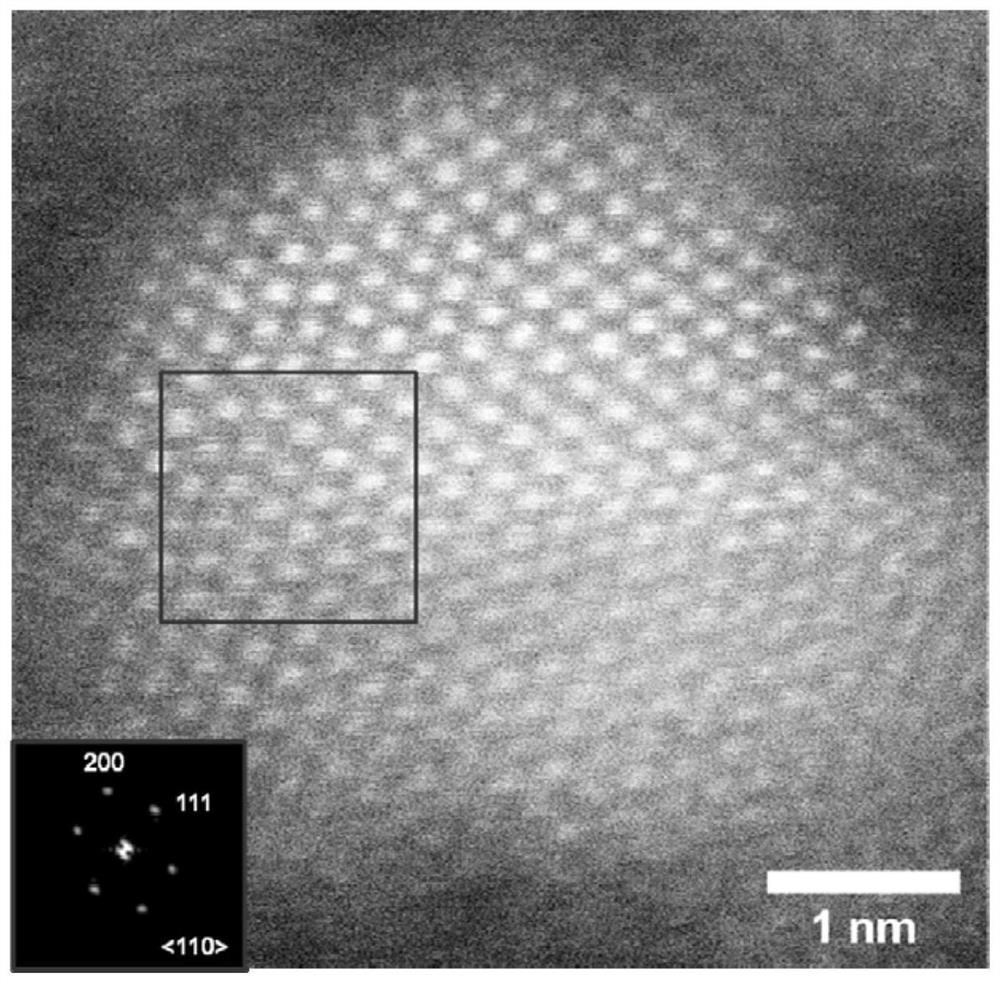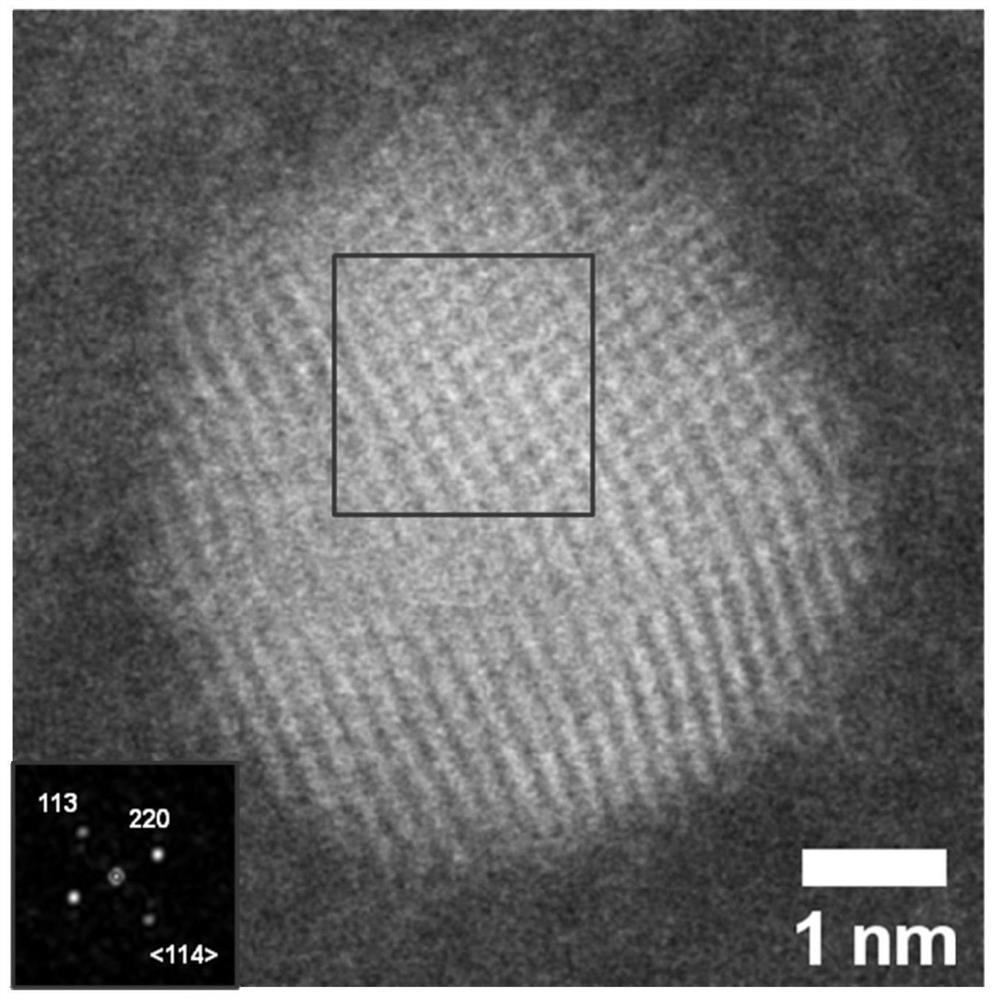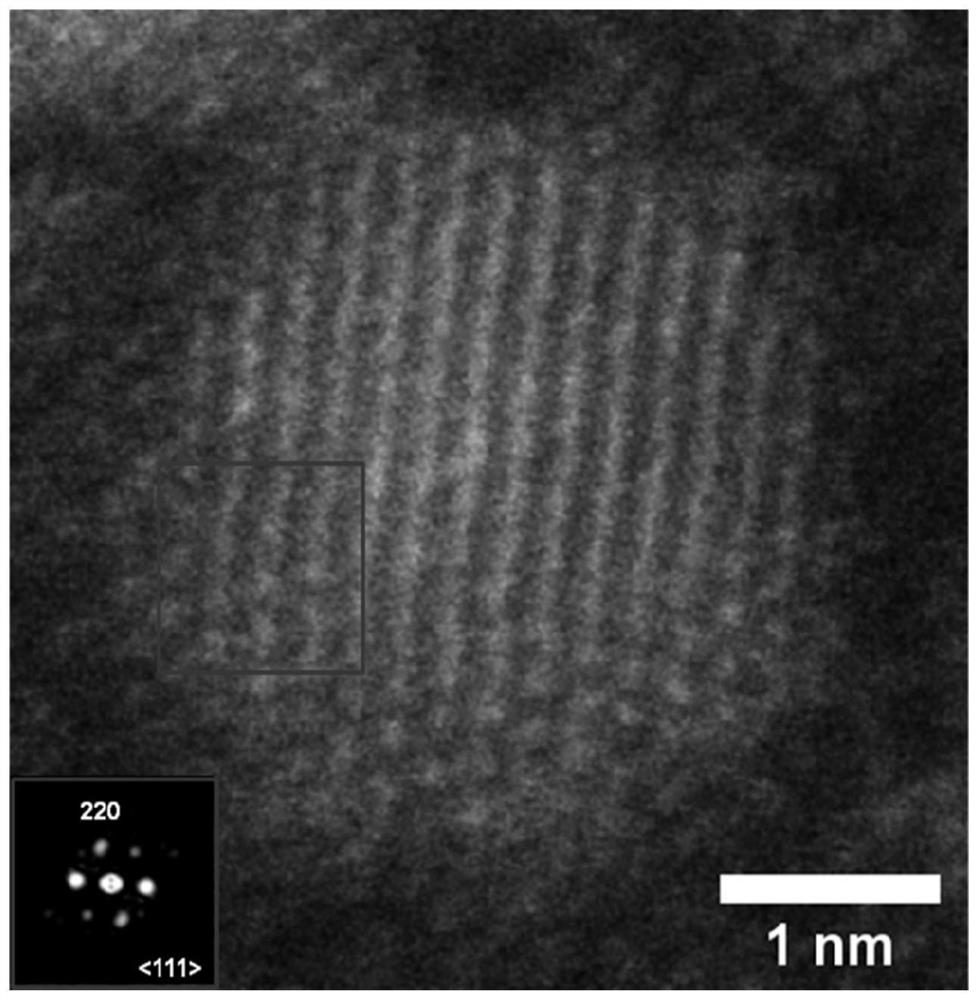A kind of nano material and its preparation method and application
A nanomaterial and nanoparticle technology, applied in the field of nanomaterials, can solve problems such as uncontrolled, high cytotoxicity, and many side reactions of synthesis, and achieve the effect of great application potential and high biological photosensitivity
- Summary
- Abstract
- Description
- Claims
- Application Information
AI Technical Summary
Problems solved by technology
Method used
Image
Examples
Embodiment 1
[0035] Example 1: Preparation of nanoparticles with amine covalent linkage activity on the surface
[0036] (1) Preparation of silicon nanoparticles CHO-Si (nanoparticle II) with aldehyde group modification on the surface: Mix trimethoxysilane (4mL), methanol (5mL), water (5mL) and nitric acid (50mmol) and stir for 2 minutes , when the system appears gel or even completely solidified, stop stirring. After the reactant was aged for two days, the reactant was dried under vacuum for 24 hours and then taken out. The completely dried silanol-rich xerogel was placed in a tube furnace, and heated at 1100° C. for 1 hour under a mixed atmosphere of hydrogen and argon. After cooling, it is pre-ground with an agate mortar, and then added to a ball mill for ball milling. The obtained pale yellow powder was dispersed in a mixed etching solution of water, ethanol and hydrofluoric acid. After the etching reaction was carried out for one hour, the hydrogen-bonded surface-modified nanoparti...
Embodiment 2
[0040] Example 2: Preparation of nanoparticles IV with imine bonds covalently attached to the surface
[0041] The silicon nanoparticle CHO-Si (nanoparticle II) modified by the aldehyde functional group prepared in Example 1 is well dispersed in the solvent chloroform by ultrasonic, and moved into a pressure-resistant tube equipped with a polytetrafluoroethylene stopper, and added with 0.2 mol of butylamine in the active primary amino group is heated and reacted at 85-120° C. for 24-36 hours. The red fluorescence of the system gradually faded, showing purple-red fluorescence, and finally blue fluorescence at the end of the reaction. Centrifuge the whole system, take the supernatant and spin dry to remove the solvent, then re-disperse the nanoparticles in ultrapure water, and then obtain the nanoparticles IV with imine bonds covalently connected on the surface, the transmission electron microscope picture is as follows image 3 As shown (the black part in the lower left corner...
Embodiment 3
[0042] Example 3: Preparation of nanoparticles V with amide bond covalent linking activity on the surface
[0043] The silicon nanoparticle COOH-Si (nanoparticle III) modified by the carboxyl functional group prepared in Example 1 is well ultrasonically dispersed in the solvent acetonitrile, and moved into a pressure-resistant tube equipped with a polytetrafluoroethylene stopper, adding phenylethylamine 0.2mol, heat reaction between 25~120℃ for 24~48h. The red fluorescence of the system gradually faded, showing purple-red fluorescence, and finally blue fluorescence at the end of the reaction. The whole system was subjected to centrifugation, the supernatant was obtained by rotary evaporation and dried to remove the solvent, and then the nanoparticles were re-dispersed in ultrapure water to obtain nanoparticles V with amide bonds covalently connected on the surface.
PUM
| Property | Measurement | Unit |
|---|---|---|
| particle diameter | aaaaa | aaaaa |
| size | aaaaa | aaaaa |
Abstract
Description
Claims
Application Information
 Login to View More
Login to View More - R&D
- Intellectual Property
- Life Sciences
- Materials
- Tech Scout
- Unparalleled Data Quality
- Higher Quality Content
- 60% Fewer Hallucinations
Browse by: Latest US Patents, China's latest patents, Technical Efficacy Thesaurus, Application Domain, Technology Topic, Popular Technical Reports.
© 2025 PatSnap. All rights reserved.Legal|Privacy policy|Modern Slavery Act Transparency Statement|Sitemap|About US| Contact US: help@patsnap.com



